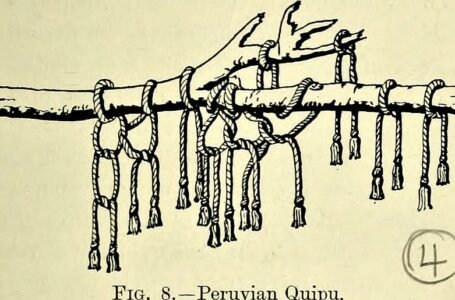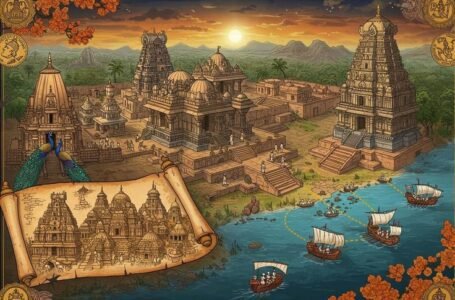Chinnamasta: The Self-Decapitated Goddess
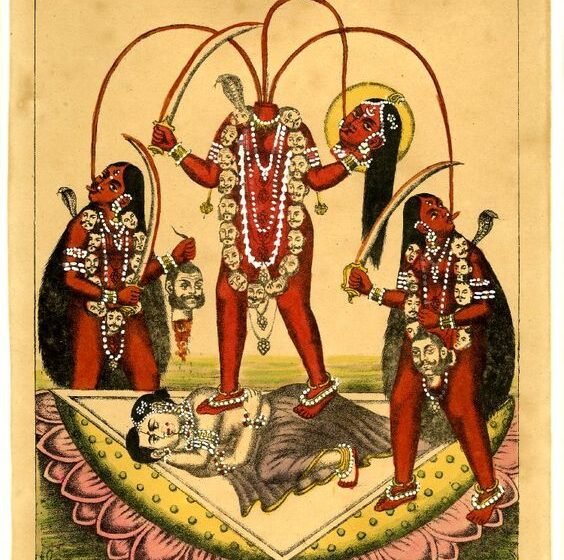
In Dasa Mahavidyas of Shakta tradition, Chinnamasta devi is the sixth Hindu goddess. She is known for her shockingly striking depictions of her decapitated head. Her name derived from chinna meaning severed and masta meaning head, literally translates into the goddess with a severed head. This stark imagery is central to her representation and symbolic significance in Hindu mythology. She stands for self sacrifice, transformation, sexual dominance and destructive fury. Chinnasmasta is believed to be both the giver and taker of life, symbolizing her association with the cyclical nature of creation and destruction. She also holds contradictory stance as a sexual self control and sexual energy.
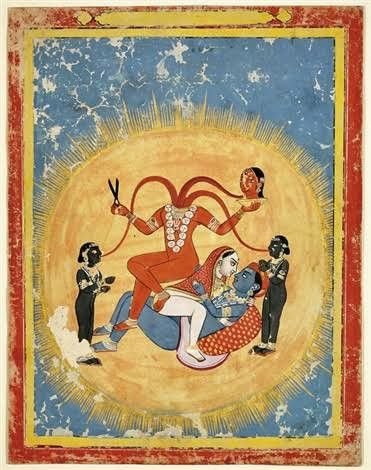
One of the primary myths associated with Chinnasmasta is detailed in the Pranatoshini Tantra, an important text in the Shakta tradition, which venerates the divine feminine energy, Shakti. According to this tale, the goddess Parvati, the consort of Lord Shiva, was bathing in the sacred river Mandakini with her two attendants, Dakini and Varnini. After bathing, Parvati felt and intense hunger and her complexion turned black due to the pangs of hunger. Her two attendants also feeling hungry asked Parvati for food. In an act of self-sacrifice and compassion, Parvati transformed into her fierce form, Chinnasmasta, and severed her own head. Three streams of blood spurted from her neck: one stream was drunk by her own severed head, which she held in her left hand and the other two streams were drunk by her attendants, satisfying their hunger.
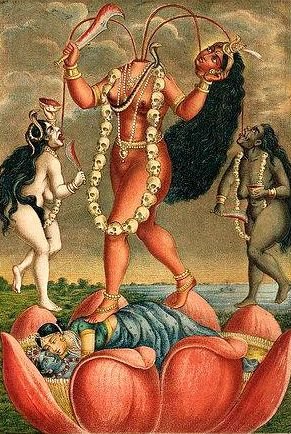
Tantric texts often depict Chinnasmasta as a goddess who helps devotees overcome their ego and attain spiritual liberation. In these texts, her self-decapitation is symbolic of cutting through the illusion of Ahamkara and realizing the unity of existence. The flowing blood represents the life force Prana that sustains the universe, and her attendants symbolize the energies that maintain cosmic balance. Chinnasmasta’s severed head is a powerful symbol of transcendence. By decapitating herself, she demonstrates the ability to rise above the limitations of the physical body and ego. This act represents the abolition of ignorance and the realization of higher consciousness. The three streams of blood flowing from Chinnamasta’s neck serve multiple symbolic meanings. The blood is symbolic of life force and represents the vital energy that sustains all living beings. By directing the streams to her attendants and herself, Chinnamasta emphasizes the interconnectedness of life. The three streams can also be seen as a representation of the triple goddess archetype in Hinduism, symbolizing creation, preservation, and destruction. In Tantric symbolism the blood streams are sometimes associated with the three primary channels or nadis in the body through which Kundalini energy flows namely the Ida, Pingala, and Sushumna.

Chinnasmasta in her iconography is mostly depicted as red or orange in complexion. She is shown in a fearsome form, standing or sitting, naked or minimally clothed, with her severed head in one hand and a scimitar or sword in the other. Blood spurts from her neck, forming thee streams that are consumed by her severed head and her two attendants. The severed head held in her hand symbolizes the transcendence of ego, the relinquishing of the false self, and the ultimate attainment of spiritual liberation. By holding her own head, she shows mastery over her own mind and ego. This act of self decapitation can be seen as an extreme form of self sacrifice and a representation of the destructive aspects of creation, wherein old previous forms must be destroyed to make a pathway for new forms.
In her iconography just like the goddess herself, her two attendants Dakini and Varnini are depicted as naked, and drinking the stream of blood from her neck. They have matted hair, and are either blueish grey or white or red in complexion. The attendants symbolize the dual forces of creation and destruction. By nourishing them with her blood, the goddess demonstrated the connection between these forces and the idea that both creation and destruction are necessary for the maintenance of the cosmic balance. The sword of scimitar that the goddess holds in her other hand is a symbol of power, destruction, and the ability of slaying and cutting of ignorance and delusions. This weapon represents the decisive action required to severe bonds with the ego and false perceptions that individuals harbour within them, enabling the devotees of the goddess to achieve a higher state of consciousness beyond the ills and evils of the material realm holding them back from seeing the ultimate reality of the cosmos.
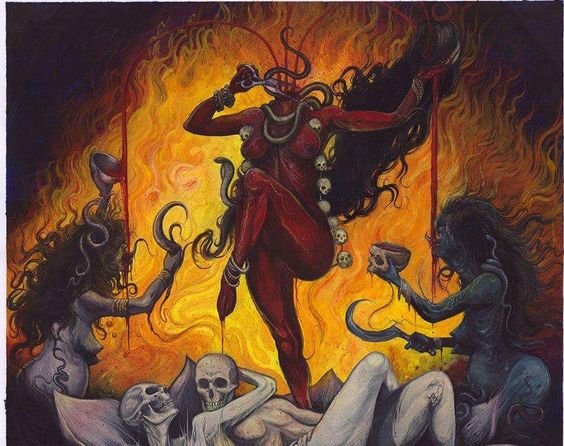
Chinnamasta’s nude depiction or her portrayals of wearing barely any garments symbolise her superiority over the worldly attachments and societal norms. Her nudity signifies purity—due to the depictions of lotuses in her iconography—and her fearless nature. It showcases her as an independent and fierce deity who is beyond conventional morality and expectations, attesting to her supreme divinity. Chinnamasta is portrayed as standing or sitting on a copulating couple. In many narrations the copulating couple is the love god Kamadev and his consort Rati, and in other narrations it is Lord Shiva with his consort. This imagery holds a deeper significance within Hinduism. By standing on the couple, the goddess signifies her triumph over physical desires and the importance of transcending mundane pleasures in pursuit of spiritual awakening.
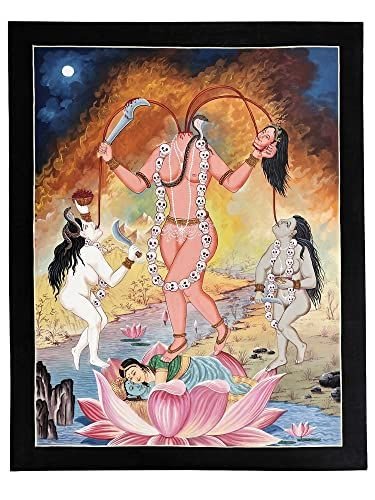
The copulating couple also represent the act of creation and the life force, while the goddess’s decapitation signifies destruction. Combined these illustrations suggests the nature of creation and destruction, and the process of life and death. From a psychological perspective, specifically through the views of Carl Jung’s analytical approach, Chinnmasta’s iconography can be interpreted as an archetype of the transformative power of the feminine. The goddess embodies within herself the integration of the shadow, the unconscious part of the psyche which holds the repressed weakness and instincts. Her imagery is a reflection of the process of individuation or the journey towards self-realization and the combination of all aspects of the self, both the conscious and the unconscious. The severed head represents the shedding of the false self, allowing the true self to emerge.
Tantric traditions view Chinnamasta devi as a powerful goddess who facilitates the transformation of consciousness. Her practices are created specifically in the manner that break through the veils of illusion that is Maya and bring spiritual awakening. Chinnamasta’s sadhana is a dedicated spiritual practice that involves rituals, meditations, and mantras focused on invoking her energy and blessings. The sadhana is typically performed under the guidance of a guru due to the intensity of the ritual and the spiritual challenges the rituals may possess. One of the basic practices in the goddess worship involves the recitation of her seed syllable mantra. The bija mantra is believed to invoke her energy guiding the devotees towards spiritual transformation. Offerings are an essential part of the goddess’s sadhana. These offerings may include fruits, incense, and in some tantric traditions, symbolic offerings like red vermillion are made.
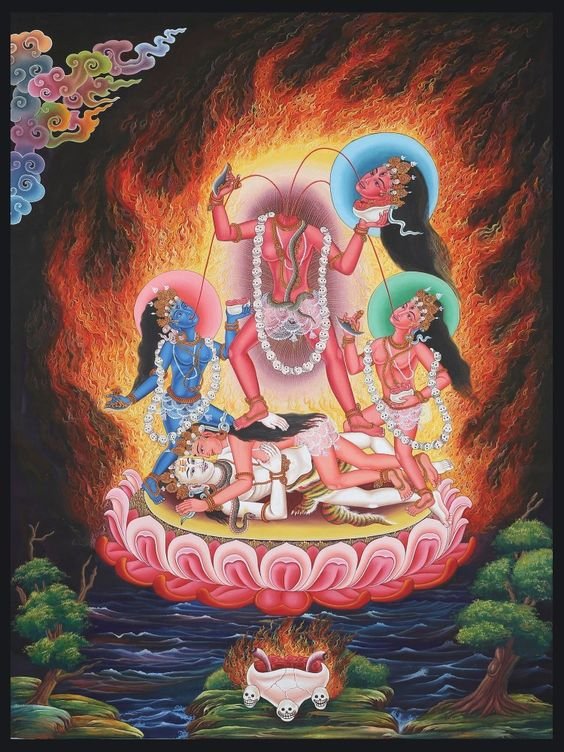
Chinnamasta Jayangi is the most important festival dedicated to the decapitated goddess. This festival celebrates her appearance and divine power and the festival falls on the Chaturdashi the fourteenth day of the waxing moon in the month of April or May. The goddess is also worshipped during the Navaratri festival and Durga Puja, that celebrates the various forms of the divine feminine. Chinnamasta is also celebrated in regional traditions of India, especially in areas where tantric practices are prevalent. Temples like Chinnamasta Temple in Rajrappa, Jharkhand hold a special celebration and rituals to appease and honour the goddess.
Chinnamasta, the severed-head or the decapitated goddess, stands as one of the most enigmatic and profound deities in the Hindu gods and goddess. Her fierce and paradoxical nature encapsulates the interplay of life and death, creation and destruction, self-sacrifice and the eventual liberation. Her unique iconography challenges her devotees as well as the scholars studying the goddess to seek an understanding of her divinity beyond the material realm, and to approach her form as the fierce, fearless divine feminine.
